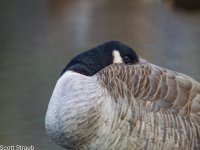If you can't decide whether the optics are under or over corrected you almost certainly don't have a problem. A real star test often shows a little softer rings outside focus from air turbulence somewhere in the atmosphere in front of the infinity focus point and correction also shifts with distance. Your images look too good to me to worry about.
Yes spotters can have pinched optics. Have you tried rotating your eye around the optical axis of the eyepiece while observing the oval shapes? That will tell you whether they originate in the scope or your own eye. If the oval rotates with your eye the astigmatism is coming from you. From your description this sounds like extremely mild astigmatism if it even is astigmatism.
Could be that you are now down to trying to decide whether your cherry scope is a good enough cherry. It might might be time to declare victory.
Henry
Thank you, Henry. Probably a dumb question, but if the orientation of the oval shape changes from horizontal to vertical, even with my head in the same position but changing from inward defocus to outside of focus, would that not indicate that it is the scope? Sorry if that is a silly question.
Regardless, I will try what you suggested.
I do agree, though, that this scope is at minimum satisfactory, and probably above average. Color correction seems less than preferred, but good, all things considered. I really like it.
Hi Joker,
You need to do what Stanley Kubrick did.

Instead of renting lenses like everyone else, he bought ten of the finest lenses, tested them all and used the best of the ten for the movie with the second best as back up.
Unfortunately for Barry Lyndon he only had three of the Zeiss 50mm f/0.7 Planars so had less choice.
Only ten of these lenses were made with one remaining at Zeiss and most of the others used for photos of the back of the Moon taken with a modified Hassleblad.
If Saturn wasn't so low I'd expect to see Titan, Rhea, Dione, Tethys and Iapetus with the Swarovski STX 95.
I have seen Enceladus with a 150mm Maksutov from a town balcony.
At minus 10C one is likely to have temperature effects.
The large front elements could be affected by contraction.
It is possible the retaining ring could contract also, but I think it needs minus 30C or colder to be at risk of cracking an element.
The Kowa fluorite is probably more at risk.
One needs to be fully dressed with a scarf covering the mouth and nose.
Personally, I think the Swarovski you have is a keeper, but as I said, you could buy ten and maybe find a better one.
Regards,
B.
If only...I was made of money, I would not hesitate to try what you suggest. LOL. I know I am probably being overboard in this, but this amount of money is significant to me. I just want to be sure I am not going to end up with one of the "NON-cherry" examples. And, while I start to think I know what I am doing, in testing any of my optics, I just keep realizing how much I DON'T know.
So, if you are making fun of me, LOL, I agree with you. I am probably being paranoid. Also, I realize, at least I assume, that is all in good fun.
I appreciate your comment about the scope being a keeper. I am definitely agreeing with you at the moment. If there are serious issues, I am pretty certain that Swarovski would assist. Maybe, I am wrong, but that is what I am told. I very much like it. I really like Kowa too, but like the build, etc, better with Swarovski. I would have at least liked to have looked through the Harpia 95, but they were out. The 85 was very very nice. But, the digiscoping options with Swarovski, camera adapters, etc, made me go ahead with the Swarovski.
Hi,
yes, spotting scopes can have pinched optics, sometimes even only in cold conditions due to lenses sitting nice and snug at room temperature... a slight rattle is not sth to complain about with good optics...
As for the amount of SA - it's minuscule in the image you showed and you can really ignore it. At the level shown in your images, it might even have been introduced by the artificial star being a bit too close.. what was our distance btw?
Joachim
Thank you. There is definitely no rattle with this scope. I would expect to hear the same or similar rattle one would have with an air-spaced doublet refractor, is that correct?
Yes, I am sure that the Hubble star was too close. I used it indoors, so I was limited on distance, obviously. Distance was around 50 feet. I did the same test outdoors at 100+, and had similar results. The test with a real star the other night showed a more discernible set of rings on either side of focus. Neither was noticeably brighter on either side. The only real change I perceived was the fact that the fuzziness changed from inside to outside.
I REALLY appreciate the input on this star test. The last question for you guys, which again will be difficult to answer without actually looking through the scope, since my camera can introduce issues I am sure, is whether the color correction is ok. I think it is, but I see some fringing (Especially, around the Canada Goose's chest, which was at 70x and 40 yards away or so). I do not like it, but not sure it is worth risking something worse. I think the very very good outweighs the bad or mediocre here. Through the scope, things look great, in this area too, but I would prefer perfection...who doesn't.
Here are a few photos I took last night. Most of them were taken at 70x or close to it. I had to crop each of them to rid them of vignette. They were RAW images and finished with PS Express on my phone. It was thickly overcast, and 23 degrees F. So, higher ISO than preferred with a phone camera, but it is what it is.
Again, thank you for your input.









